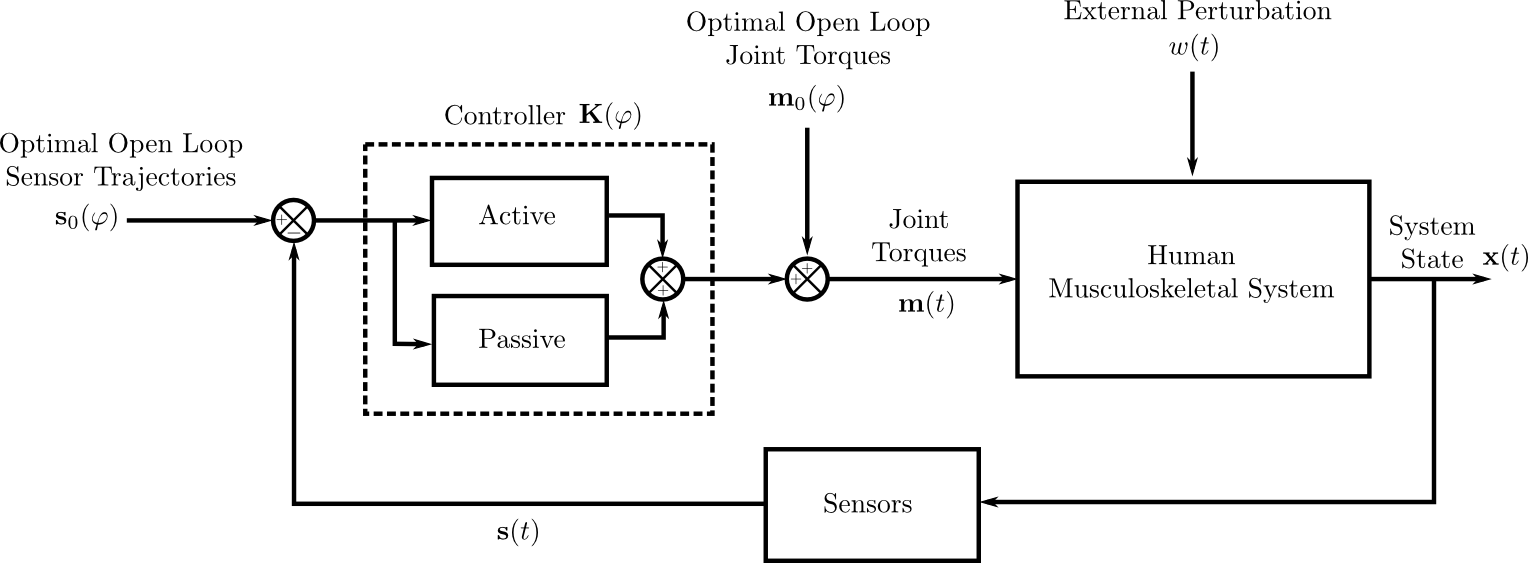
Summary
During my post doc at Cleveland State University, I worked with Ton van den Bogert and developed methods to identify the human's controller during gait. We developed both direct and indirect identification methods and methods for identifying a gain gait scheduled controller for planar walking. The motivation was to develop a controller that could possibly be used in powered lower extremity prostheses, such as an exoskeleton.
Publications
- Moore JK, Hnat SK, van den Bogert AJ. (2014) An elaborate data set on human gait and the effect of mechanical perturbations. PeerJ PrePrints 2:e700v2 http://dx.doi.org/10.7287/peerj.preprints.700v2 [source repository]
- Quiet standing control identification paper draft
Data
All of the data collected for this study is published under the Creative Commons Zero license on Zenodo:
Moore, Jason et al.. (2014). An elaborate data set on human gait and the effect of mechanical perturbations. ZENODO. 10.5281/zenodo.13030
Software
GaitAnalysisToolKit
This Python package provides various classes and functions for dealing with typical gait data, e.g. marker and force plate time series. It contains a module that parses and organizes the data outputs from Motek Medical's products.
opty
opty is a Python library for optimal control and parameter identification of dynamic systems. It is capable of large scale problems, such as identification from tens of minutes of gait data.
Gait Identification
This repository contains Python scripts and IPython notebooks for exploratory analysis in gait control identification.
Talks
- Indirect Identification of Human Control During Walking, NCSSR Visiting Scholar Kickoff, July 15, 2014 [slides]
- Identification of human control during walking, Dynamic Walking, Zurich, Switzerland, June 10, 2014 [slides]
- Identification of human control during walking, TU Delft, Netherlands, June 6, 2014 [slides]
- Identification of human control during walking, Midwest American Society of Biomechanics Conference, March 4 2014, [slides]
